There are five flights a week from Pyongyang to Beijing by Air Koryo, North Korea’s state airline, and the earliest leaves at 8:20 on Saturday mornings. If you’re one of the several hundred American tourists who defy their State Department’s official warning and travel to the authoritarian hermit state each year, this will easily get you to the Chinese capital in time for one of several afternoon flights stateside.
The morning of Jan. 2, 2016, was foggy and cold. The night before, a meteorologist on the state-controlled Korean Central Television said that temperatures the following afternoon might climb to the mid-40s (around 7°C)—a balmy respite after a bitter, snowy week—but at dawn, when Otto Warmbier was heading from the Yanggakdo International Hotel to Sunan International Airport, 18 miles north, thermostats in the capital hovered just above freezing.
Warmbier, who had turned 21 three weeks prior, was a junior at the University of Virginia (UVA). He was one of 20 foreigners on a trip organized by Young Pioneer Tours, a travel company based in China and staffed by a coterie of chummy Brits and Aussies who arrange, in their words, tours to “destinations your mother would rather you stayed away from.” They offer package tours to Afghanistan and Turkmenistan, but really, folks come for the Democratic People’s Republic of Korea (DPRK), as the North is formally called. The totalitarian hermit kingdom exists in the imagination of many as inscrutable and thrillingly dangerous.
Warmbier’s junket was billed as the “New Year’s Party Tour”: a five-day itinerary, devised and closely monitored by state-sponsored tour guides. The travelers met soldiers in the Demilitarized Zone (DMZ), the 2.5-mile-wide buffer zone that has separated North Korea from the prosperity and liberty of South Korea since 1953; they posed for photos beneath the two 72-foot-high statues of North Korea’s founder, Kim Il Sung, and his son and heir Kim Jong Il, at Pyongyang’s Grand Monument. At night, they drank, slamming vodka and North Korean beer until the early hours of the morning in the closely watched hotel.
And now they were going home. For Warmbier—an affable, somewhat eccentric young man with aspirations of working in finance—this firstly meant a trip to Hong Kong, for a week-long finance course trip sponsored by UVA. Then, he would fly back to back to Wyoming, Ohio—a Cincinnati suburb of 8,000 people, where his family lived.
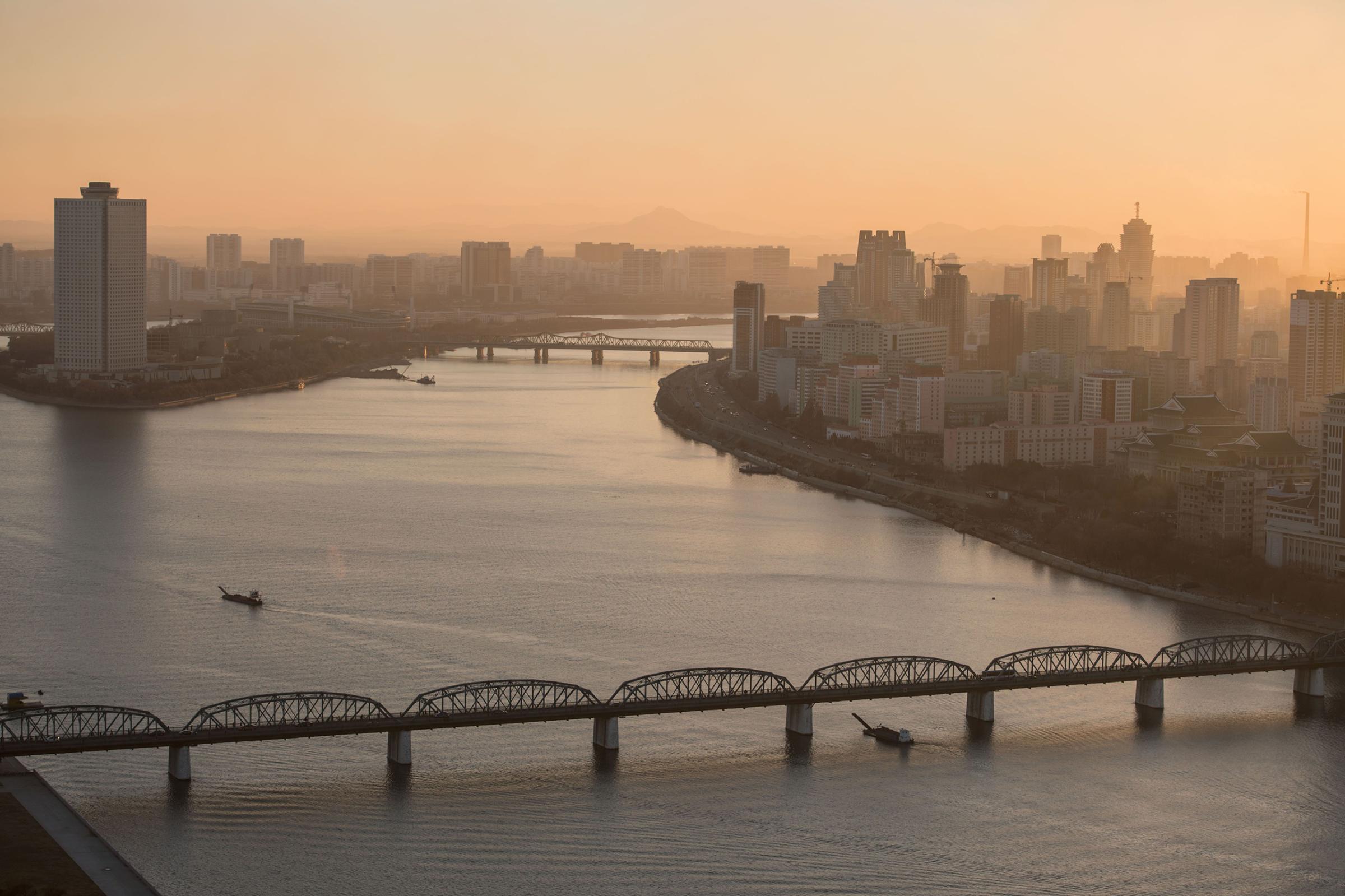
“Otto wasn’t problematic or politically outspoken,” one member of his tour says. “He acted like a normal 21-year-old on holiday. He was a pleasant guy, and to be honest, if I had to pick a tourist in that group to be involved in an incident, he would have been at the bottom of the list.”
It takes about 40 minutes to reach Pyongyang’s airport from the hotel aboard a government tour bus. Tour guides return the passports that visitors have surrendered upon arrival, but once travelers arrive at the airport, immigration is more or less the same as it is anywhere: baggage is checked in; boarding passes are issued; immigration formalities are completed.
A Young Pioneer representative will go through the process last, to make sure the group has gone through smoothly. Warmbier was the last of his group to check in, and thus there was only one non-Korean witness to what happened next: 24-year-old Briton Charlotte Guttridge. When she noticed that he was taking longer than usual, she began to walk over to him, only to be told by an insistent airport official that she had to pass through immigration immediately.
Once on the other side of passport control, she looked and saw that was Warmbier was being led away by two uniformed officers. “Otto!” she yelled. He looked at her, and then was led into a room off to the right of the immigration desks. His calmness initially put her at ease—she suspected, then, that the officers were simply inspecting his luggage or electronics, which happens. “He was not dragged away and he wasn’t yelled at,” Guttridge later told Reuters. She stayed in the terminal until the final call for boarding, and then somewhat anxiously took her seat aboard the Air Koryo Tupolev Tu-214, a Soviet-era jet.
Minutes passed. As the cabin crew began to prepare for departure, word spread that Warmbier hadn’t boarded. “One or two were saying that they’d been drinking the night before and he was probably hungover in his hotel,” one tourist traveling with a different group remembers. Others ventured, half-jokingly, that he may have defected.
The plane was about to push back from the terminal when an official came aboard and approached Guttridge. “Otto is very sick and has been taken to the hospital,” the official told her.
She asked when he would be released.
“Tomorrow,” the official said. “Maybe next week.”
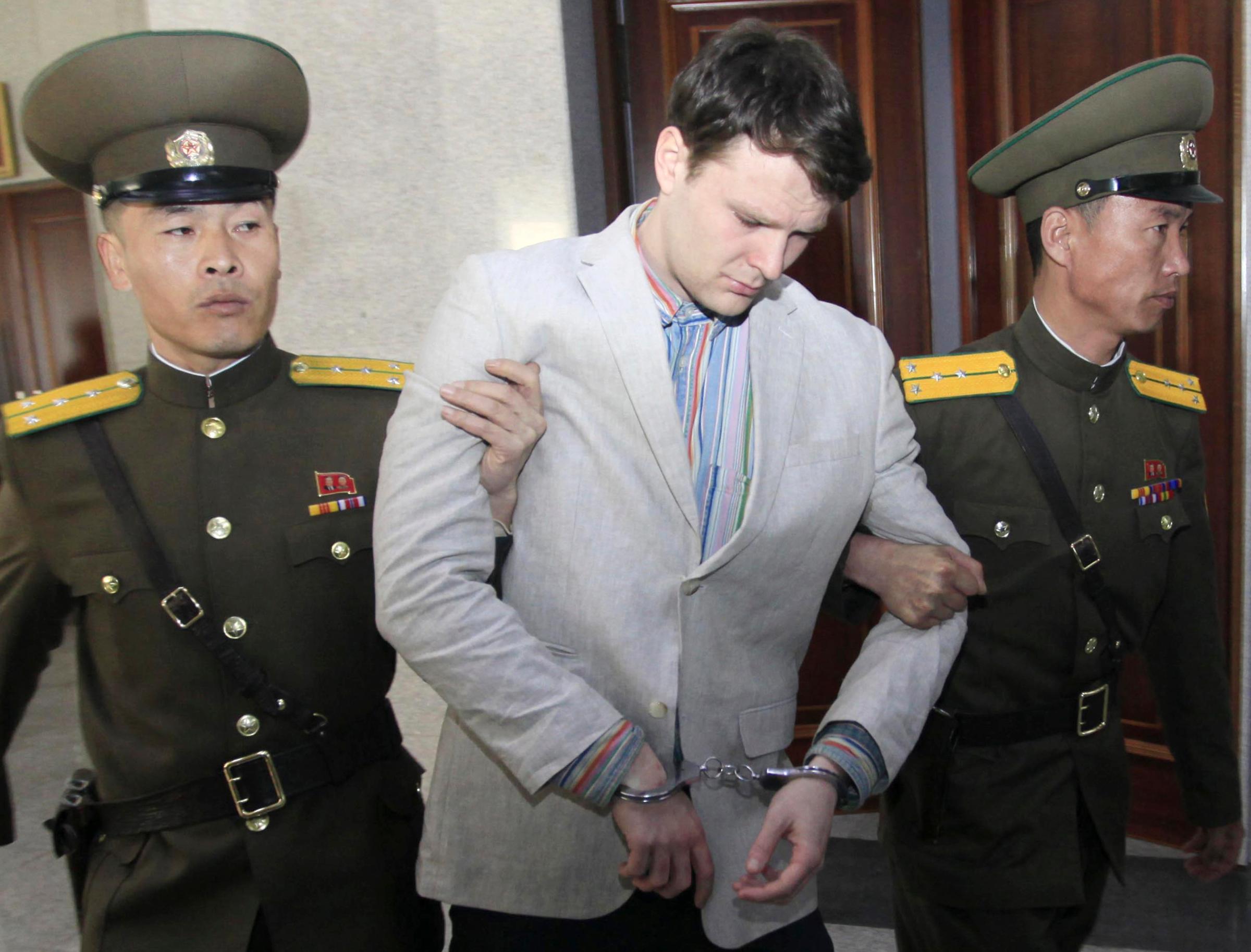
The Most Doomed Man in the World
That was 16 months ago. Three weeks later, the Korean Central News Agency, Pyongyang’s official mouthpiece, reported that Warmbier had been arrested while “perpetrating a hostile act against the DPRK.” He intended, apparently, to bring down “the foundation of its single-minded unity [with] the tacit connivance of the U.S. government and under its manipulation.”
The reports did not elaborate on the nature of his wrongdoing, but six weeks after that, Warmbier appeared before state television news cameras, sallow and dressed in a light jacket and navy-colored slacks. In a fanciful and apparently forced confession that began in level tones but ended in histrionics, he revealed his “crime.”
Warmbier said that a day before his departure, he had attempted to steal propaganda signage from a staff-only area at his hotel, in a scheme implausibly devised by a Methodist church in his hometown, a secret society at the University of Virginia, and the United States government.
“Please, people in the government of the DPR Korea, I beg that you see how I was used and manipulated,” he said, his voice breaking into sobs. “I have made the single worst decision of my life. But I am only human. I beg that you find it in your hearts to allow me to return home to my family.” He also praised North Korea’s “humanitarian treatment of severe criminals” like himself and in the course of his 35-minute address described Pyongyang as “an Eastern Jerusalem.”
Two and a half weeks later, following a trial that lasted less than an hour, Warmbier was sentenced to 15 years of hard labor. Since then, he has been held at an undisclosed location.
It remains unclear if he did anything at all. The North Korean government’s primary piece of evidence against him is a grainy surveillance video showing a nondescript figure attempting to remove something from a wall. But, if the figure depicted was Warmbier, then “What he did was the equivalent of a poorly planned college prank that should have earned a verbal admonishment, or at most a fine, not a political show trial in Pyongyang,” Phil Robertson, deputy Asia director for Human Rights Watch, says. “North Korea is blatantly violating his rights by holding him as a political hostage to be traded in a future dialogue with the U.S. that looks nowhere close to starting.”
The world seems to have forgotten about Warmbier. Americans who have preceded him in North Korean custody spent an average of 206 days in detention before the U.S. successfully negotiated their release. Kenneth Bae, the Korean-American missionary, was held for 735 days; as of April 28, Warmbier has been captive for 482. (There are two other Americans also in North Korean captivity: Tony Kim, an academic visiting a North Korean university detained last week; and a Korean-American businessman named Kim Dong-chul.) One recent headline in the Daily Star, a sensational British tabloid, asked if Warmbier was the most “doomed man in the world” and speculated, in capitalized fascination, that the “North Korea student may NEVER be released.”
That isn’t the unanimous belief in Washington. “The United States government continues to actively work to secure his earliest possible release,” Mark Toner, the U.S. State Department’s acting spokesperson, tells TIME. But he doesn’t specify how it is doing so.
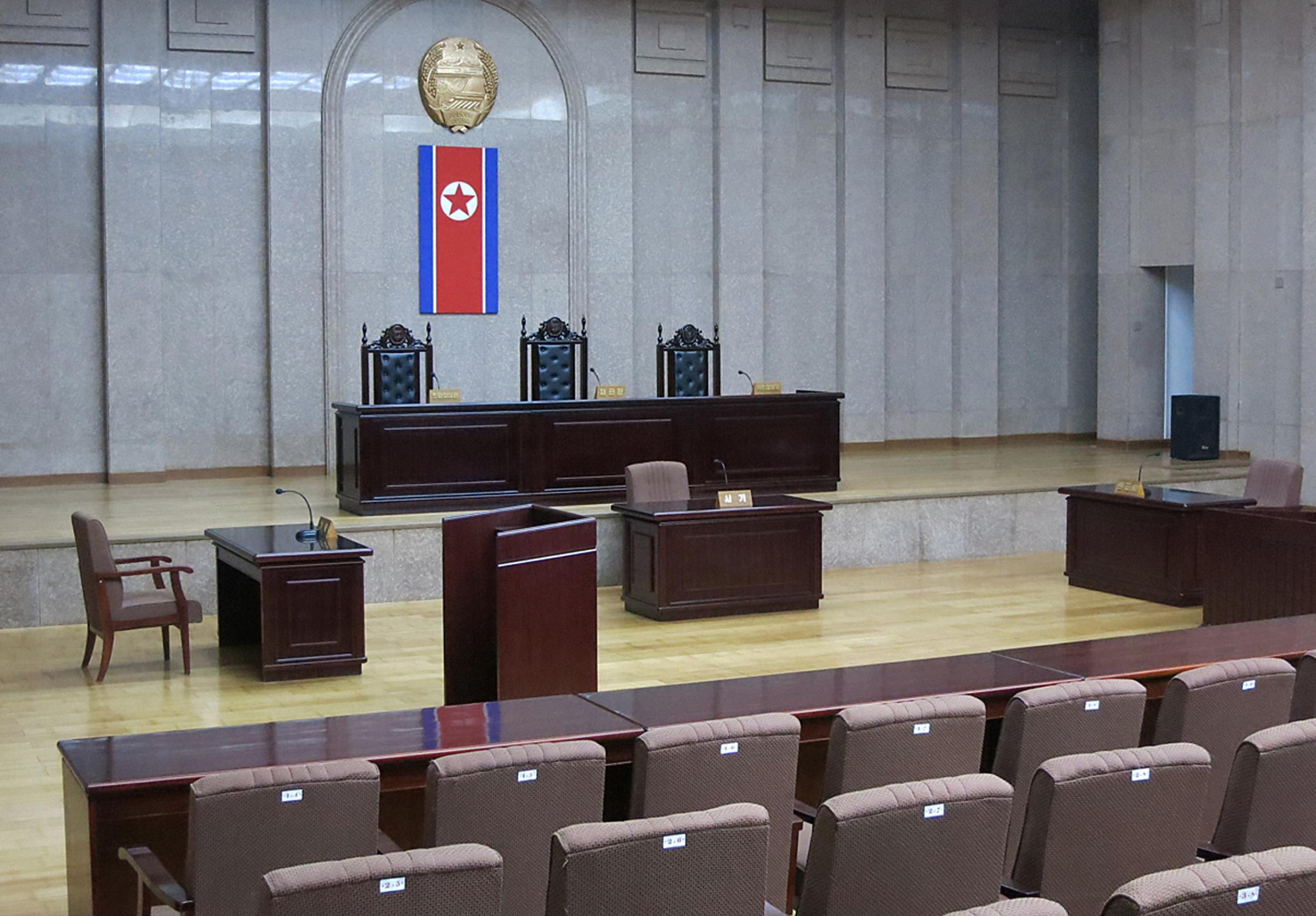
The First Victim
Today, geopolitical tensions on the Korean Peninsula are at one of their highest points since the 1950-53 Korean War. This can be partly chalked up to a new dichotomy in power: in Pyongyang, there is Kim Jong Un, who has proven more aggressive than his father, Kim Jong Il, when it comes to pursuing the country’s nuclear ambitions; in Washington, Donald Trump, who delights in truculence when dealing with America’s adversaries. During the weekend of April 15, speculation that the North was preparing to test an atomic weapon—which the U.S. would have considered an act of war—had the world at a standstill. Major news organizations are quietly, and preemptively, dispatching their staffers to Seoul, which, lying just 35 miles from the DMZ, will be virtually the front line in the event of hostilities.
Experts hope that a diplomatic solution is still possible. “We are not at a point yet where the military option is the only one,” says Scott Snyder, who directs the Council on Foreign Relations program on U.S.-Korea policy. But, he adds, “with Kim Jong Un, the U.S. doesn’t have the formula, whereas before everything kind of worked according to a predictable pattern.”
Warmbier’s fate now hangs in the balance of these complex and unpredictable machinations. Some experts believe North Korea will use him as a pawn in negotiations with the U.S., if and when talks begin; others say that they will hold onto him, using him as a “human shield” to dissuade the U.S. from attacking the country.
“The previous M.O. was to wait six or nine months, wait for the North Koreans to demand a very high hotel bill, then the person in question will be released,” Snyder says. “The North Koreans are now less open to doing these kinds of trades.”
Evans Revere, a former high-ranking U.S. diplomat in East Asia who is now a senior fellow at the Brookings Institution, says Warmbier’s detention is a symptom of Pyongyang’s pathological determination to defy Washington and the world. “Some time ago, North Korea decided it was necessary to send the strongest possible message that it would not tolerate violations of its laws and its sovereignty by outsiders. Unfortunately, Otto Warmbier turned out to be the first victim.”
His family members and many of his peers have generally refused to speak on the record to the media; they mostly keep a low profile out of an extreme fear of saying or doing something to incite Warmbier’s captors and make his incarceration even worse. But friends who are willing to open up about him say that Warmbier was never known for his recklessness. In the wake of his arrest, their prevailing response was abject shock.
An exceptional student and a varsity soccer player, he was the last person to exhibit the kind of impulsive behavior that would have him locked up in a foreign jail on even a misdemeanor let alone charges of sedition. The oldest of three, Warmbier grew up in a leafy suburb that has produced Olympians (the swimmer Deana Deerdurff, the hurdler David Payne), an eminent illustrator (Robert McGinnis, who created the movie posters for Breakfast at Tiffany’s and several James Bond films), a general, a federal judge and a world authority on stroke rehabilitation. Warmbier’s father, Fred, runs a small metal finishing company.
Wyoming High School is one of the country’s best and most competitive public schools—a staggering 90% of students take Advanced Placement courses—and in 2013, Warmbier graduated as its salutatorian. “He was off-the-charts brilliant,” Trey Lonneman, who played club soccer with Warmbier through middle and high school, says. When Warmbier was a senior, it was rumored among his classmates that he had received a perfect or near-perfect score on the ACT, the college entrance exam.
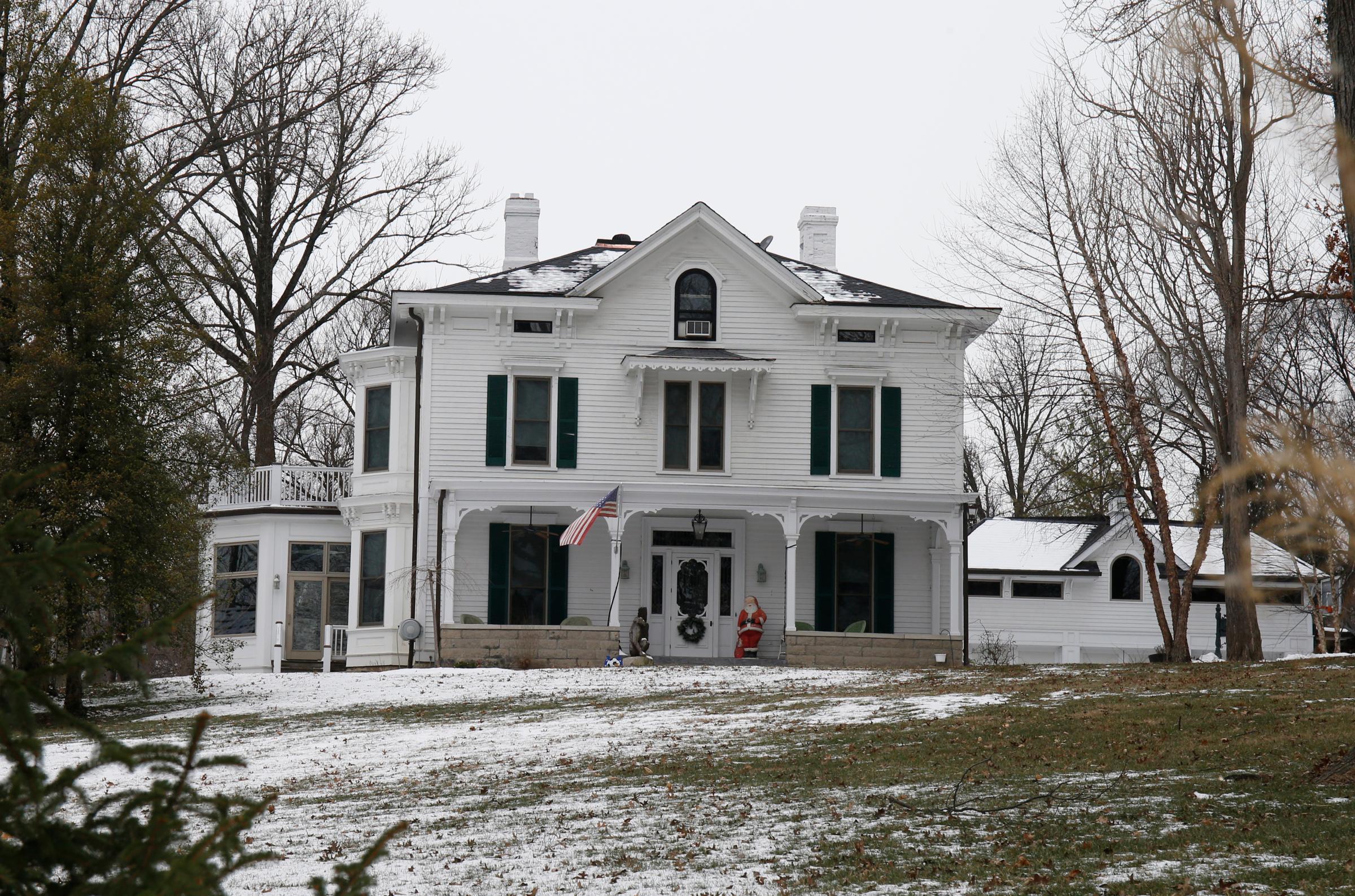
“But really, he was just a good, funny dude. When this happened, no one was surprised that he had gone to North Korea—he was one of the most intellectually curious kids that I’ve met,” Lonneman says. “We were more shocked that he’d gotten into trouble.”
Warmbier’s admission to UVA in Charlottesville, about seven hours over the Appalachian Mountains from home, was itself a feat of certain intellectual prestige—UVA is one of the best public universities in the country and accepts only one in five out-of-state applicants. But Warmbier went one better and was chosen as an Echols Scholar, as members of the undergraduate honors program are known.
By all accounts, he did well. UVA is what one might call the Platonic ideal of the American university: neoclassical red brick buildings and wide, verdant lawns; admirably well-rounded students who pull all-nighters in the library and drink beer from red Solo cups and cheer for their lacrosse team in equal fervor; a town beyond the gates tinted, as college towns are, with the cultural runoff of lefty academia.
It is also an institution that has been plagued by an unfortunate string of public relations crises in recent years. In March 2015, amid a national discourse over racial inequity in America, an African-American student was beaten and bloodied by police outside an off-campus bar over a fake ID. It was UVA that served as the setting of the sensational—and sensationally inaccurate—November 2014 Rolling Stone article “A Rape on Campus,” a story of a fraternity party sexual assault and allegedly a damning indictment of the university’s established Greek culture. (Rolling Stone retracted the story five months later, in the spring of Warmbier’s freshman year, when it came to light that the incident was fabricated by its supposed victim.)
Warmbier himself participated in the Greek scene, joining the Theta Chi fraternity as a freshman—a fact that has been a trope of the news coverage of his arrest, underpinning a string of bloviated think-pieces about the “frat bro” and his white privilege. The truth is that Theta Chi is regarded on campus as a group of “kind of nerdy dudes,” as one student put it.
Warmbier himself fit that mold. Peers regarded him as intelligent but also a bit eccentric, and deeply earnest, especially when it came to pursuing a career in finance. This is not especially surprising—UVA ranks among the country’s top 10 programs in business and finance, according to U.S. News and World Report, and draws droves of students accordingly—but those who knew Warmbier said his ambitions were betrayed by a certain guilelessness. “[He was] heading into investment banking, but he was definitely not from that whole world,” one student says.
Still, his résumé was impressive. He took on a rigorous course load, including one advanced econometrics course at the London School of Economics, and participated in a prestigious student investment group. Following his North Korea tour, he was scheduled to travel from Beijing to Hong Kong and Singapore, where he would participate in a 10-day tour of the two Asian financial capitals sponsored by the university’s McIntire School of Commerce.
He was supposed to land in Beijing late in the morning on Jan. 2. His parents were home in Ohio, waiting for their son to return to the grid. But he didn’t surface on the phone, or on social media.
“We knew he was in North Korea,” said Warmbier’s father, Fred. “And of course, a mother figures these things out: ‘He hasn’t called me. He should be in China now.’”
Warmbier was speaking to Tucker Carlson on Fox News earlier this month, sitting next to his wife, Cindy, who looked somber. (It was the Warmbiers’ first major media appearance since their son’s arrest. Those acquainted with their situation suggest that their agreeing to sit down Tucker Carlson wasn’t a fluke: they believed that Fox News was the channel most likely to be watched by President Donald Trump and members of his administration. The Warmbiers have declined repeated requests from TIME)
When Warmbier didn’t call, his parents decided to wait 24 hours. Then the phone rang. It was an official at the U.S. State Department.
“They said: does Otto take medicine?” Fred Warmbier recalled to Carlson. “They don’t say anything about detainment, but of course we bring it up. And they say, ‘yeah, he’s being detained.’”
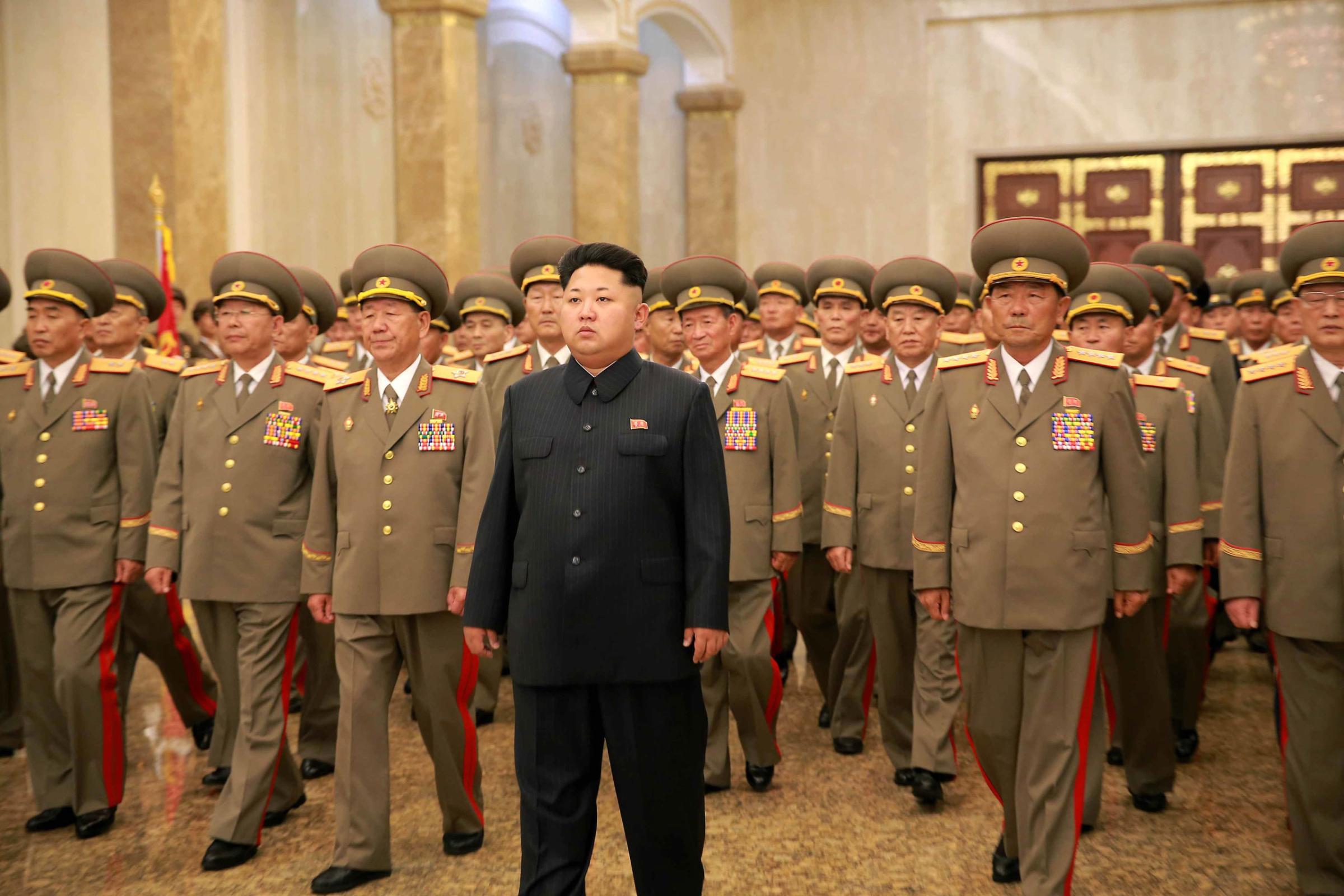
The Last Exotic Place on Earth
In May of 1972, 19 years after the end of the Korean War, three American journalists landed in Pyongyang. They were the first to be allowed inside the secretive nation since the conflict two decades prior, which began when the Soviet-backed North invaded the American-backed South.
The Korean Peninsula had for centuries been home to an isolationist kingdom, and an inward-looking mentality perfectly suited the needs of a socialist state practicing its own ideology of Juche, or revolutionary self-reliance. Amid a culture of fear buttressed by surveillance, a state monopoly on information, and all the police apparatus of repression, a personality cult grew around the head of state, Kim Il Sung, the pudgy soldier chosen by the Soviets to lead the communist North.
The dispatches filed by the American reporters were glowing. Harrison E. Salisbury, a legendary foreign correspondent for the New York Times, described a “large, imposing capital… built almost from scratch” out of the rubble of the war, a land of “bright May sunshine with pink azaleas and yellow primroses blazing in the Pyongyang parks.” The capital—and the fact that these foreign correspondents were allowed in it—was “visible evidence that even on this remote East Asian littoral the tides of change are at work.”
The tides of change were doing no such thing. In fact, North Korea grew stagnant. As the journalist Barbara Demick notes in her book Nothing to Envy, the country initially depended on its Soviet allies for electricity, food and trade. Then the Soviets left. Capitalist South Korea was in the throes of its economic golden age. In the North, there was only deprivation, hunger and struggle.
“North Korea can’t change,” Robert Kelly, a political scientist at Busan National University, says. “They can’t open up like China or Vietnam, because then it just becomes a poorer version of South Korea. It won’t be the Cambodia of Northeast Asia—it has to maintain a distinctly different ideological system to justify its existence compared to the happier, wealthier Korea.”
Some are uncertain how long this can last. In the Internet age, the once hermetic North Korean state has become penetrable. “There’s word-of-mouth, USB sticks, South Korean television dramas,” Snyder, at the Council on Foreign Relations, says. “The sheen has come off. In the 1990s, there was a popular song called ‘My Country Is The Best Country In The World,’ and it was entirely plausible that the people who sang it believed it. I’d bet the majority of them don’t anymore.”
Still, North Korea’s isolation has given it a peculiar luster to foreigners; indeed, it drives tourism to the country. During the Cold War, there were many countries closed to travelers. The American backpackers who today spill their beers in the streets of Hanoi or Prague might not realize that until just two decades ago or so, it was difficult if not impossible to travel to such places as tourists. These days, even Cuba is open. That leaves North Korea—the totalitarian dystopia of Stalinist boulevards and morning sirens—as the last resort of jaded travelers in search of fresh bragging rights.
Pyongyang is fully aware of it. Tourism’s ability to bring in much needed foreign currency became especially valued after the imposition of international sanctions that followed Kim Jong Il’s 2006 announcement of his country’s nuclear ambitions.
“After the Iron Curtain fell, there were fewer and fewer ‘exotic’ places,” explains Snyder. “North Korea rose in prominence as one of them.”
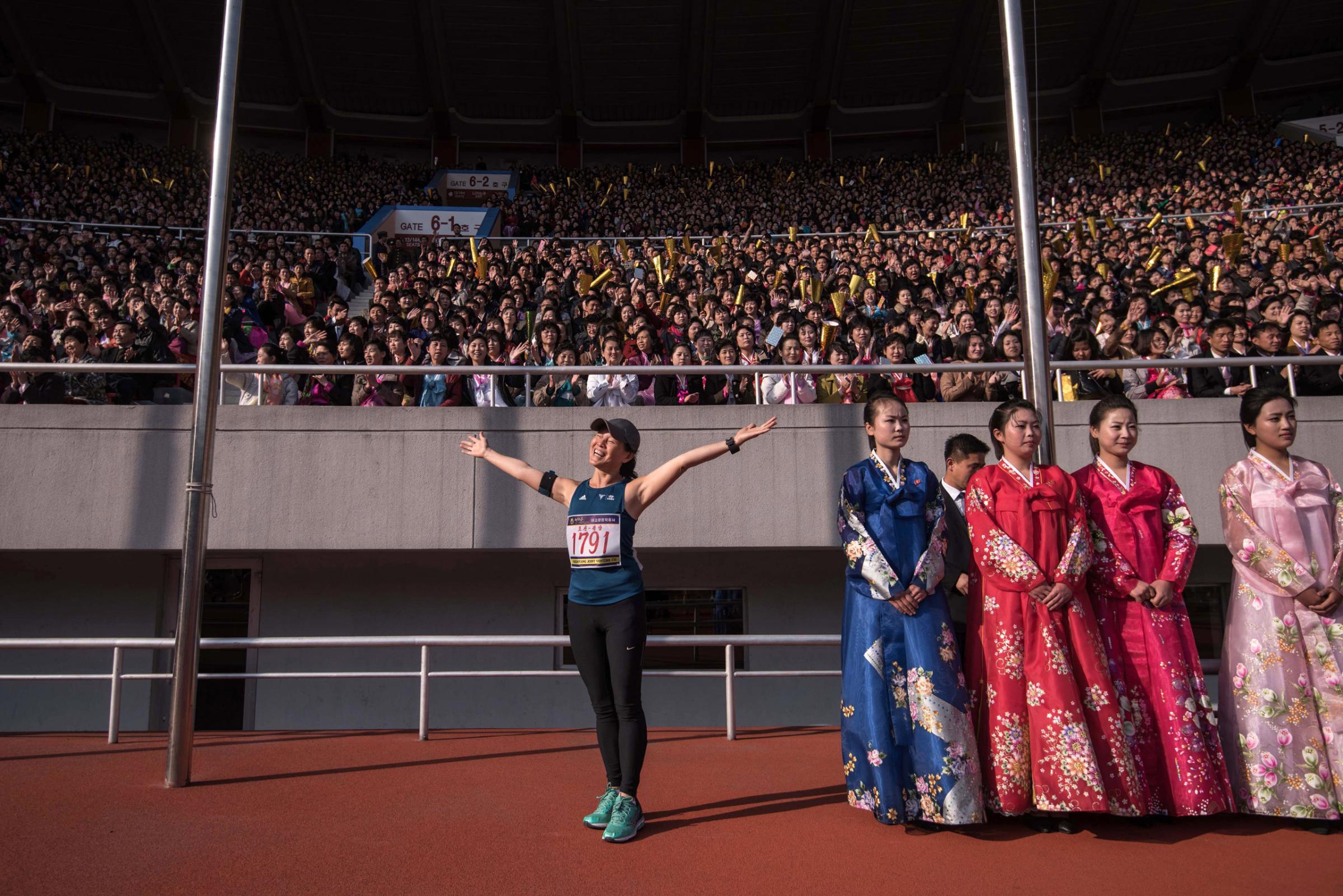
Today, around 100,000 tourists travel to North Korea annually—the vast majority Chinese but the figure includes around 5,000 Westerners—collectively injecting around $43.6 million into the country’s economy each year. They do so under the aegis of one of the handful of tour companies that have been approved by North Korean authorities to conduct trips to the country, which are constantly chaperoned by state-appointed minders and guides. The oldest, largest and most reputable company catering to Western visitors is Koryo Tours, founded in 1992 by two British expats in Beijing. In the beginning, they were doing a few tours a year, leading groups of around only 10 or so travelers, most of them British. Today, they see between 2,000 and 2,500 clients a year.
Around a quarter of those are Americans. Of the 1,000 foreign amateurs who competed in the Pyongyang Marathon on April 9, 104 of them were from the U.S. This is a relatively new development. American tourists have only been regularly allowed into North Korea only since late 2005, when Koryo was permitted to lead a tour centered around the Arirang Festival, the annual mass games that inform the Western vision of North Korea: thousands of smiling dancers performing in lockstep before a stadium of dazzlingly synchronized workers moving colored boards in giant tidal waves to depict scenes of socialist rapture.
Today, there are several agencies Americans can choose from. Warmbier went with Young Pioneer Tours, a nine-year-old company that renders its name in faux Cyrillic font and has as its logo a figure holding a hammer-and-sickle flag. Its competitive edge is price. On its website, its describes itself as “the first company to offer budget tours” to North Korea. Its all-inclusive “ultra budget” weekend trips to Pyongyang from Beijing cost about $570, less than half the price of Koryo’s trip of similar duration.
Any American traveling to North Korea does so in direct contravention of their government’s advice. The U.S. State Department “strongly urges” citizens to avoid any travel to the country; Warmbier’s case, spokesman Mark Toner says, “underscores the very real risks associated with travel to North Korea.”
This is unlikely to dissuade the adventure-seeker who has “been everywhere else but wants that stamp in their passport,” as one veteran of the North Korean tourism industry put it. Tour companies also dismiss it as undue scaremongering. Americans who have traveled to North Korea with Koryo or Young Pioneer vouch for the ability of both companies to prepare clients for the occupational hazards of entering the world’s most totalitarian state. Before the tourists depart for Pyongyang, they are briefed for several hours on rules and etiquette, most of which concern respecting North Korea and the godly hegemony of the Kim dynasty. (For instance: One must fold a newspaper with caution, lest one leaves a crease in the face of a photograph of Kim Jong Un.)
“They tell you not to be an idiot, not to criticize the system—they’re very explicit about what you’re getting into,” the political scientist Kelly says. “People know what North Korea is.”
This is why North Korea watchers have tended to be somewhat unsympathetic about Warmbier, or at least about his arrest. To them, it’s not an act of injustice; it’s justice according to a deeply peculiar set of rules. “I genuinely think he did it,” Kelly says. “People go to North Korea and think they’re on a regular tour. They go off and do stupid stuff; they drink too much and get in trouble.”
But, he says, “I’m kind of surprised this poor kid has been held for so long.”
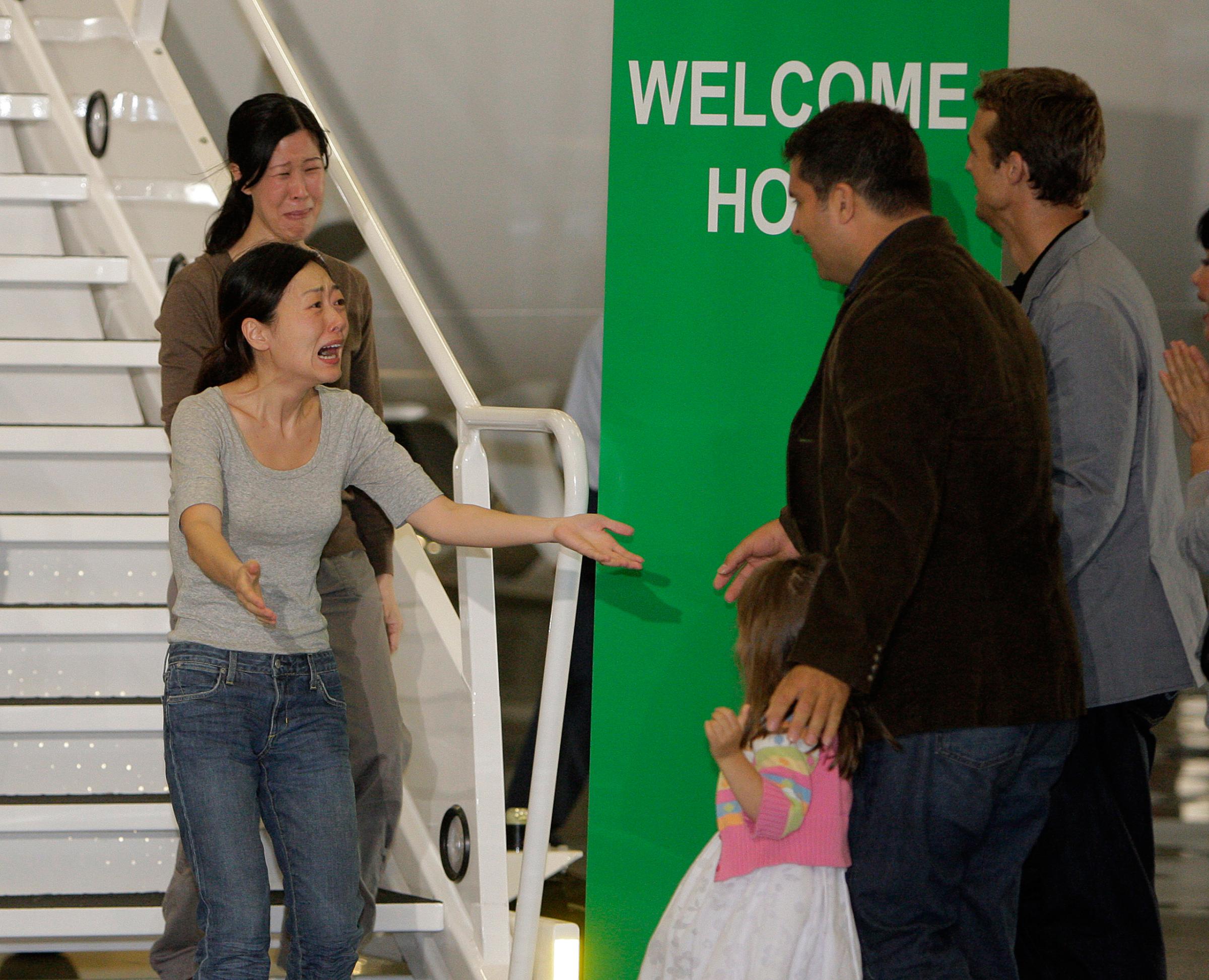
Guesswork and Consternation
If Warmbier is being treated like any other of the 120,000 prisoners in North Korea’s gulags, he will be suffering horribly: Malnutrition is endemic in prison camps, and prisoners are literally worked to death—“usually for 12 hours a day or more, while being berated, harassed, and physically beaten by guards,” Robertson of Human Rights Watch says. The camps are up in the mountains, where in winter the temperature drops well below freezing.
The obvious hope is that Pyongyang sees Warmbier as an asset worth keeping alive—if not in comfort then at least not at the point of starvation and death. But nobody knows. “No one’s reached out to us,” Fred Warmbier said in his Fox News interview. “Look: we let our son go there. But I would have hoped that at this point, someone would have reached out and given us some reassurances. That doesn’t happen in our world.”
The last official foreign interaction with Warmbier took place on March 2, 2016, two months he was arrested and two weeks before he was sentenced, when he met with diplomatic representatives from Sweden. Only 24 countries have embassies in Pyongyang—compare this to 110 in Seoul—and since 1995, the Swedes have served as Washington’s representatives there, offering limited consular services to Americans in the country. The Swedish ambassador, Torkel Stiernlöf, lives with his wife and nine-year-old daughter in a compound that used to house the East German embassy; water and electricity cuts are common, but Stiernlöf notes that the compound has a nice garden.
“For several years there have almost always been one or two Americans in North Korean custody for a shorter or longer period,” Stiernlöf tells TIME. “These cases are time consuming [but are] a priority for this embassy. They tend to never leave your mind simply because of the obvious human aspect.”
Stiernlöf refused to elaborate on the meetings with Warmbier, though acting U.S. State Department spokesperson Mark Toner says that Washington is “in regular, close coordination with the Swedes.”
However, nobody has been more publicly involved in working to free Warmbier than Bill Richardson, the affable former New Mexico governor and congressman who served as Secretary of Energy and U.S. Ambassador to the United Nations under President Bill Clinton. Since exiting public life, he has helmed the nonprofit Richardson Center for Global Engagement, which acts as an intermediary between the U.S. and nations with which its relations are strained, especially when it comes to negotiating the release of prisoners and hostages.
Richardson has traveled to North Korea eight times; he has connections with high-ranking North Korean diplomats. He first became involved in Warmbier’s case not long after the arrest, when he got a call from Ohio Governor John Kasich. In September 2016, amid diplomatic tensions over North Korea’s nuclear bomb test that month, his center sent a delegation to the country to meet with North Korean officials.
“The reason this has taken longer is that Kim Jong Un is very unpredictable,” Richardson says of efforts to secure Warmbier’s release. “In the past, under Kim Jong Il these types of political prisoners were used as bargaining chips. One was able to make deals with the [North Korean] leadership—basically for the release of Americans you’d get humanitarian aid or a high-level visit.”
But unlike his father, Kim has little interest in bargaining. Compounding this is a new president across the Pacific about whom many say the same.
“The recent tension is very serious—the worst I’ve seen in the Korean Peninsula, mostly because of Kim Jong Un’s militaristic behavior and President Trump’s similarly unpredictable policies,” Richardson says. He adds that there could be a deal for Warmbier. “Eventually.”
Richardson and other experts say that it is too early to discern precisely what the Trump administration’s approach will be when it comes to handling North Korea, though many believe fears of a preemptive military strike are exaggerated. “He thrives on uncertainty, so I’d be foolish to give any statement that definitively states what he might do,” Snyder says. But so far “it’s the Trump playbook: suggest a willingness to take dramatic action, but with no details about what the action means. Most of what it says leaves him with the option to pursue diplomacy if he wants.”
Ultimately, though, it is guesswork and consternation that shroud Warmbier’s case, because it is guesswork and consternation that shroud the future of U.S. relations with North Korea. “As long as North Korea refuses to accept even the theoretical possibility of negotiations about its nuclear weapons program, it’s hard to see how bilateral or multilateral negotiations might resume,” Revere, the former diplomat, says.
And if there are no negotiations, there are no bargaining chips. If only Otto Warmbier could be a pawn; for now, he isn’t even that.
More Must-Reads from TIME
- Donald Trump Is TIME's 2024 Person of the Year
- Why We Chose Trump as Person of the Year
- Is Intermittent Fasting Good or Bad for You?
- The 100 Must-Read Books of 2024
- The 20 Best Christmas TV Episodes
- Column: If Optimism Feels Ridiculous Now, Try Hope
- The Future of Climate Action Is Trade Policy
- Merle Bombardieri Is Helping People Make the Baby Decision
Contact us at letters@time.com